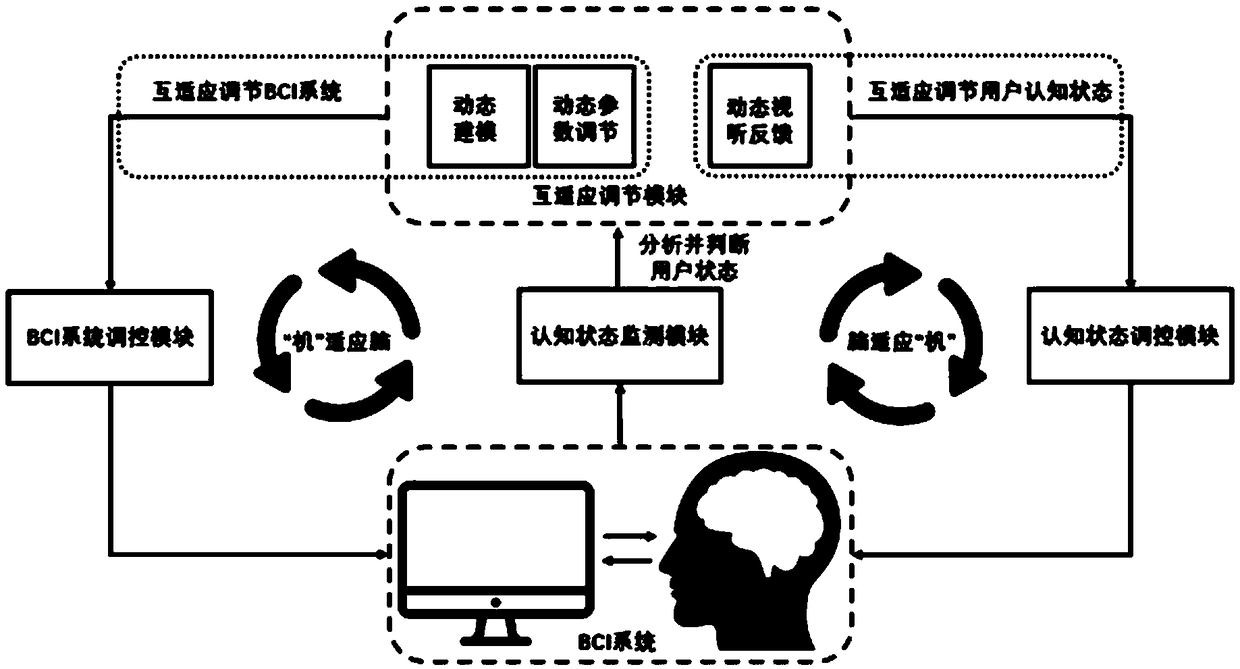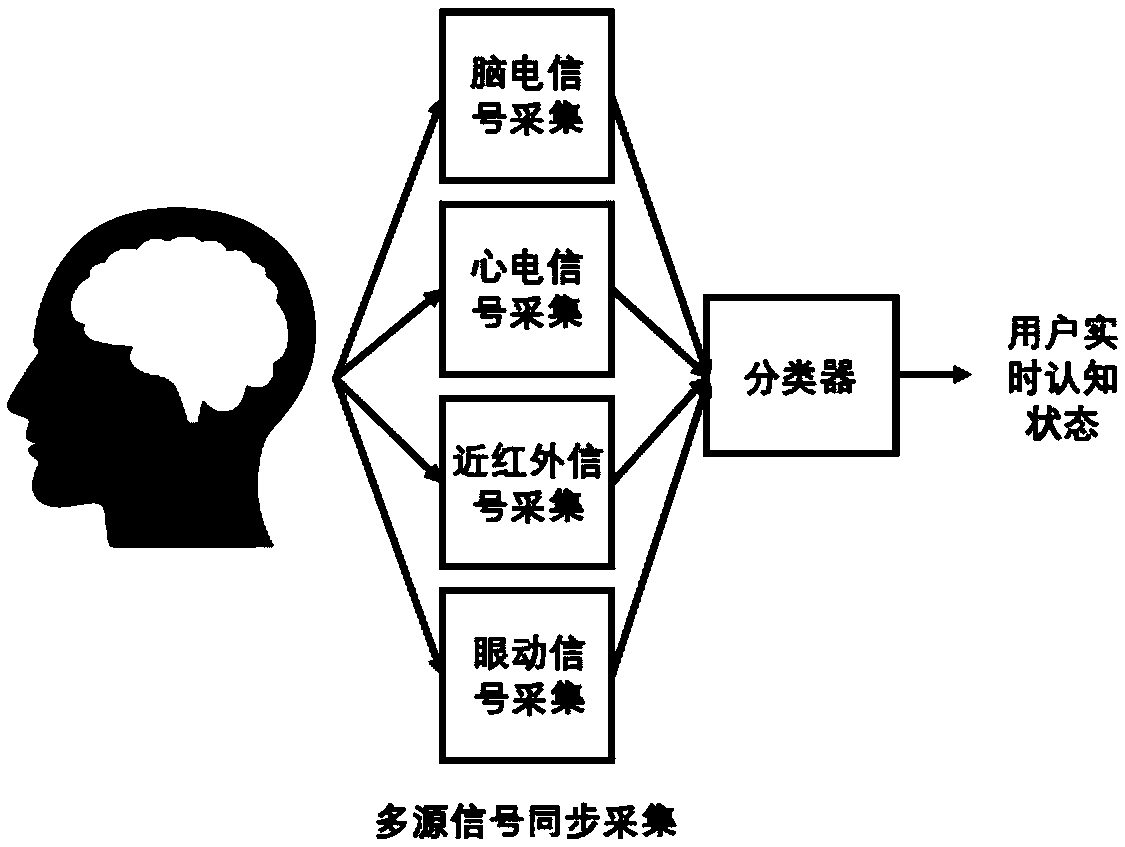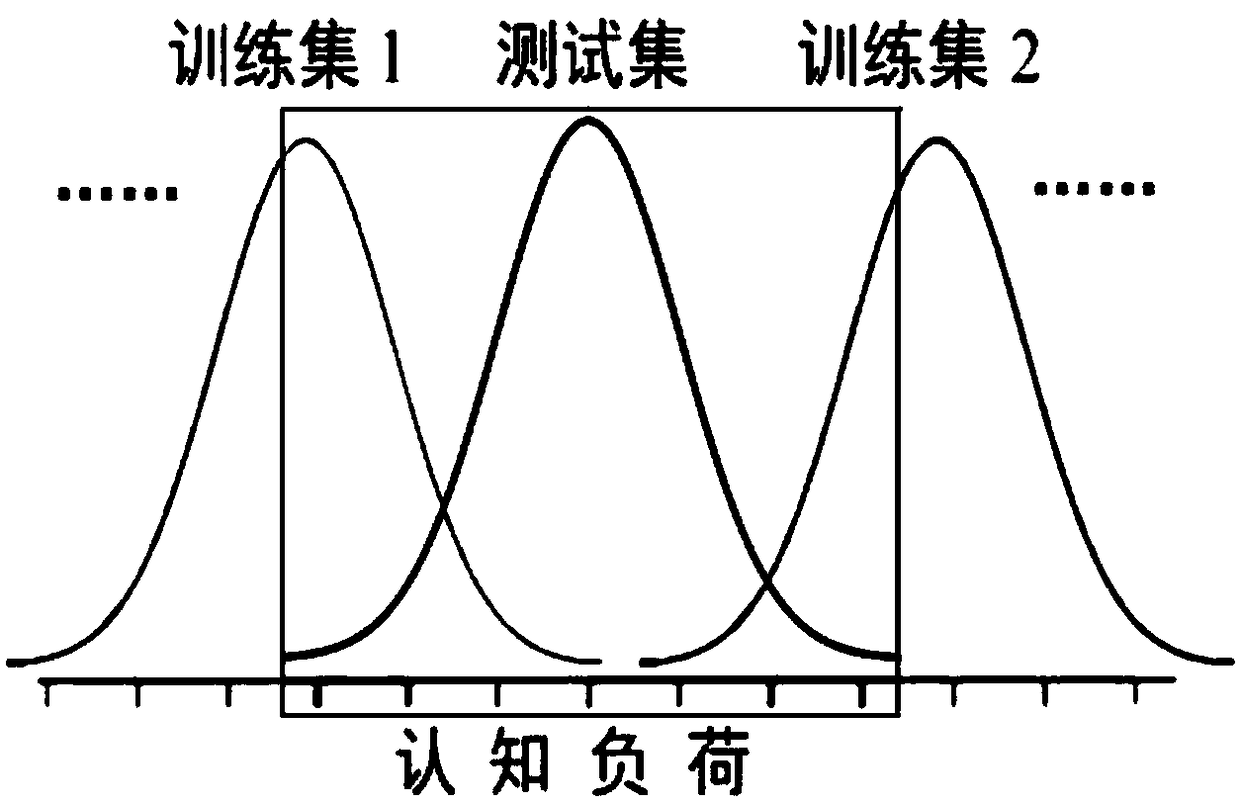A Brain-Computer Adaptive System for Brain-Computer Interface System
A machine interface and user technology, applied in the field of brain-computer adaptive systems, can solve problems such as difficult to meet the requirements of stability and lower recognition accuracy, and achieve the goals of avoiding the decline of usability, optimizing the design of man-machine systems, and reducing the risk of human error Effect
- Summary
- Abstract
- Description
- Claims
- Application Information
AI Technical Summary
Problems solved by technology
Method used
Image
Examples
Embodiment Construction
[0037] In order to make the purpose, technical solution and advantages of the present invention clearer, the implementation manners of the present invention will be further described in detail below.
[0038] Existing traditional BCI research mainly improves the accuracy, information transmission rate and stability of BCI applications by improving paradigms, feature extraction algorithms, and machine learning algorithms, and reduces the load and fatigue of the BCI system itself through paradigm design and stimulus optimization. Consider improving the stability of BCI application from the perspective of human condition. But it has been proved that, like other means of human-computer interaction, the user's own factors are an important factor affecting the stability of the BCI system in practical applications.
[0039] The embodiment of the present invention dynamically adjusts the stimulation parameters and decoding algorithm of the BCI system according to the user's cognitive ...
PUM
 Login to View More
Login to View More Abstract
Description
Claims
Application Information
 Login to View More
Login to View More - R&D
- Intellectual Property
- Life Sciences
- Materials
- Tech Scout
- Unparalleled Data Quality
- Higher Quality Content
- 60% Fewer Hallucinations
Browse by: Latest US Patents, China's latest patents, Technical Efficacy Thesaurus, Application Domain, Technology Topic, Popular Technical Reports.
© 2025 PatSnap. All rights reserved.Legal|Privacy policy|Modern Slavery Act Transparency Statement|Sitemap|About US| Contact US: help@patsnap.com



